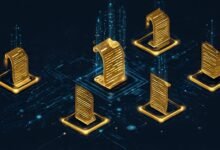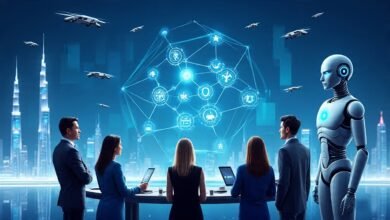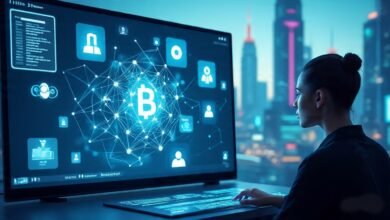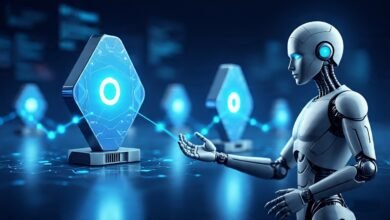How AI and Blockchain Technology Work Together
Discover how AI and blockchain technology work together to create decentralized, intelligent systems with enhanced security, automation, and data.
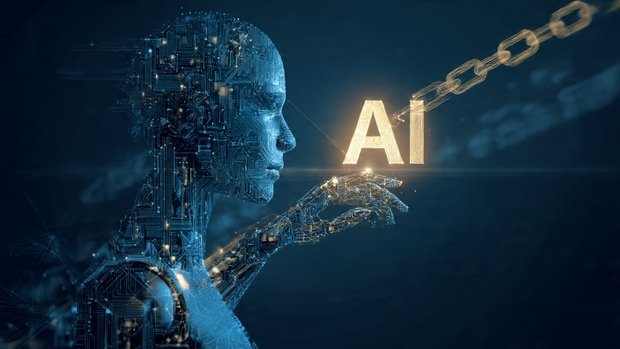
The convergence of artificial intelligence and blockchain technology represents one of the most transformative technological partnerships of our era, creating unprecedented opportunities for innovation across industries worldwide. As we navigate through 2025, the integration of these two groundbreaking technologies is no longer a theoretical concept but a practical reality that’s reshaping how businesses operate, how data is managed, and how trust is established in digital ecosystems. The blockchain AI market size is projected to expand from $0.57 billion in 2024 to $0.7 billion in 2025, growing at an impressive CAGR of 23.2%, with expectations to reach $1.88 billion by 2029, demonstrating the massive momentum behind this technological fusion.
AI and blockchain individually have already disrupted countless sectors—artificial intelligence through intelligent automation, predictive analytics, and machine learning capabilities, while blockchain through decentralized networks, immutable ledgers, and trustless transactions. However, when these technologies work together, they create synergistic effects that amplify their individual strengths while compensating for each other’s limitations. Blockchain provides AI with transparent, tamper-proof data infrastructure and decentralized governance frameworks, while AI enhances blockchain capabilities through intelligent automation, predictive optimization, and sophisticated data analysis that transforms raw blockchain data into actionable insights.
The practical applications of AI blockchain integration are vast and rapidly expanding. From intelligent smart contracts that can adapt to complex business conditions to decentralized autonomous organizations powered by machine learning algorithms, from enhanced cybersecurity systems that detect anomalies in real-time to supply chain solutions that combine transparency with predictive intelligence, the possibilities are revolutionizing traditional business models. Financial institutions are leveraging this combination for fraud detection and risk assessment, healthcare organizations are securing patient data while enabling AI-driven diagnostics, and manufacturing companies are optimizing production through intelligent, transparent supply chains.
Despite the tremendous potential, the integration of AI and blockchain technology also presents unique challenges that organizations must navigate carefully. Technical complexities around scalability, computational requirements, and interoperability need careful consideration. Regulatory uncertainties surrounding both technologies create compliance challenges, while ethical considerations around algorithmic bias, data privacy, and decentralized governance require thoughtful approaches. These challenges, alongside the opportunities, are essential for businesses, developers, and decision-makers seeking to harness the power of this technological convergence.
This comprehensive guide explores how artificial intelligence and blockchain work together, examining the fundamental principles of their integration, the technical mechanisms that enable their synergy, real-world use cases demonstrating practical value, the benefits they deliver when combined, challenges organizations face during implementation, and future trends that will shape this evolving landscape. Whether you’re a technology leader evaluating strategic investments, a developer building decentralized applications, or a business professional seeking to understand these transformative technologies, this article provides the insights needed to navigate the exciting intersection of AI and blockchain.
The Fundamentals of AI and Blockchain Integration
To appreciate how AI and blockchain technology work together, we must first understand the fundamental characteristics of each technology and identify the natural synergies that make their integration so powerful and complementary.
Core Principles of Artificial Intelligence
Artificial intelligence encompasses a broad range of technologies that enable machines to perform tasks typically requiring human intelligence, including learning from experience, recognizing patterns, making decisions, using natural language, and solving complex problems. Machine learning, a subset of AI, allows systems to automatically improve their performance through exposure to data without being explicitly programmed for every scenario. Deep learning, neural networks, natural language processing, and computer vision represent specialized AI techniques that power modern intelligent applications.
The effectiveness of AI systems fundamentally depends on three critical factors: data quality and quantity, computational power for training and inference, and algorithmic sophistication. AI models learn by processing massive datasets, identifying patterns and relationships, and creating predictive models that can be applied to new situations. However, AI faces significant challenges, including data bias, lack of transparency in decision-making processes (the “black box” problem), vulnerability to adversarial attacks, centralized data control raising privacy concerns, and difficulty establishing trust in AI-generated outputs.
Core Principles of Blockchain Technology
Blockchain technology provides a distributed, immutable ledger system that records transactions across a network of computers, eliminating the need for centralized authorities while ensuring data integrity through cryptographic hashing and consensus mechanisms. Each block contains transaction data, a timestamp, and a cryptographic hash of the previous block, creating an unbreakable chain that makes tampering virtually impossible without detection. The decentralized nature of blockchain means no single entity controls the network, enhancing security, transparency, and resilience against failures or attacks.
Key characteristics of blockchain include immutability (recorded data cannot be altered retroactively), transparency (all network participants can view transactions), decentralization (distributed control across nodes), security (cryptographic protection), and consensus (agreement mechanisms validate transactions). However, blockchain also faces limitations, including scalability challenges with transaction throughput, high energy consumption for certain consensus mechanisms like proof-of-work, limited capacity for complex computational operations, storage constraints for large datasets, and governance complexities in decentralized networks.
The Natural Synergy Between AI and Blockchain
AI and blockchain complement each other remarkably well, with each technology addressing the other’s fundamental limitations while amplifying its strengths. Blockchain provides AI with several critical benefits: a trusted, verifiable data infrastructure that ensures training data integrity, decentralized frameworks that reduce reliance on centralized data monopolies, transparent audit trails that enhance AI explainability and accountability, secure storage for sensitive AI models and datasets, and immutable records that prevent data manipulation or bias injection.
Conversely, AI enhances blockchain in multiple ways: intelligent automation that makes smart contracts truly adaptive, predictive analytics that optimize network performance and resource allocation, advanced pattern recognition for fraud detection and anomaly identification, efficient data processing that extracts meaningful insights from blockchain data, and automated governance mechanisms that improve decision-making in decentralized systems. This symbiotic relationship creates possibilities that neither technology could achieve independently.
Technical Mechanisms Enabling AI-Blockchain Collaboration
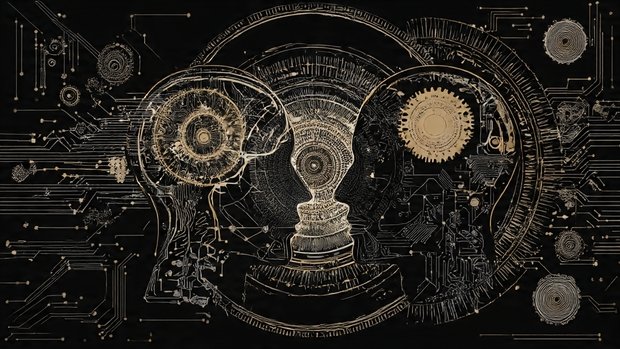
The practical integration of AI and blockchain technology requires sophisticated technical architectures and mechanisms that enable these fundamentally different systems to work together seamlessly and effectively.
Smart Contracts Enhanced by Artificial Intelligence
Smart contracts, self-executing agreements with terms directly written into code on blockchain networks, represent one of the most promising areas for AI integration. Traditional smart contracts operate on predefined rules and conditions, executing automatically when specific criteria are met. However, they lack the intelligence to handle complex, ambiguous situations or adapt to changing circumstances beyond their original programming.
By integrating AI, blockchain companies are transforming how businesses handle contracts, automate systems, and use predictive analytics. AI-powered smart contracts can analyze historical transaction data, learn from patterns, predict optimal contract terms, and even adapt their behavior based on real-world outcomes. For example, insurance smart contracts enhanced with machine learning can automatically assess claims by analyzing images of damage, comparing them against vast databases of similar incidents, and determining appropriate payouts without human intervention.
Ocean Protocol incorporates AI into its decentralized data exchange to validate smart contract logic, with the system autonomously verifying contract interactions and ensuring data tokens are handled securely, leading to a 30% drop in contract-related disputes. This demonstrates the practical value of combining AI intelligence with blockchain’s trustless execution framework.
Decentralized AI Model Training and Inference
One of the most innovative applications involves using blockchain networks to facilitate decentralized training of AI models. Traditional AI development concentrates massive datasets and computational resources in centralized facilities controlled by tech giants, raising concerns about data privacy, algorithmic bias from non-representative datasets, and monopolistic control over AI capabilities. Blockchain-based AI training addresses these issues by distributing the process across network participants.
Federated learning on blockchain enables multiple parties to collaboratively train AI models without sharing their raw data, preserving privacy while benefiting from collective intelligence. Each participant trains the model locally on their proprietary data, then shares only the model updates (gradients) to the blockchain network. These updates are aggregated using consensus mechanisms to improve the global model, which is then distributed back to participants. Blockchain can improve the trustworthiness of data resources that AI models pull from and increase the speed of AI operations by connecting models to automated smart contracts.
Data Integrity and Provenance Tracking
AI systems require high-quality, unbiased training data to produce reliable results, but ensuring data integrity throughout collection, storage, and processing pipelines remains challenging. Blockchain technology provides an immutable audit trail that tracks data provenance from origin through every transformation, enabling verification of data authenticity and detection of tampering attempts.
When training data is recorded on blockchain with cryptographic hashes, any modification to the data produces a different hash, immediately revealing the alteration. This creates trustworthy datasets for machine learning applications where data integrity directly impacts model accuracy and fairness. In healthcare, for instance, patient data used for training diagnostic AI models can be tracked on blockchain, ensuring regulatory compliance and maintaining an auditable record of what data contributed to specific model predictions.
Consensus Mechanisms Optimized by Machine Learning
Blockchain networks rely on consensus mechanisms to validate transactions and maintain network agreement without centralized authority. Traditional consensus protocols like Proof of Work or Proof of Stake follow fixed rules, but AI algorithms can optimize these processes dynamically. AI can analyze blockchain data to identify patterns, predict trends, and enhance the performance of smart contracts, including optimizing consensus efficiency.
Machine learning models can predict which nodes are most likely to validate transactions correctly based on historical behavior, reducing the time and resources required to reach consensus. AI can also detect anomalous behavior patterns indicating potential attacks or network problems, enabling proactive security responses. Additionally, AI-optimized consensus can adapt to network conditions, adjusting parameters like block size or validation requirements to balance security, speed, and decentralization based on real-time demands.
Real-World Use Cases of AI and Blockchain Integration
The convergence of AI and blockchain is moving beyond theoretical frameworks into practical implementations, delivering tangible business value across diverse industries and applications.
Supply Chain Management and Logistics
Supply chain operations benefit tremendously from combining blockchain’s transparency with AI’s predictive capabilities. Blockchain creates an immutable record of every transaction as goods move through the supply chain, from raw material sourcing through manufacturing, distribution, and delivery to end customers. Every participant—suppliers, manufacturers, shippers, retailers—records their activities on the shared ledger, creating unprecedented visibility.
AI algorithms analyze this rich blockchain data to optimize operations in multiple ways: predicting demand fluctuations to prevent stockouts or overproduction, identifying bottlenecks before they cause delays, detecting fraudulent activities or counterfeit products, optimizing routing and logistics for cost and time efficiency, and forecasting maintenance needs for transportation equipment. The combination ensures authenticity, reduces waste, improves efficiency, and builds consumer trust through transparent sourcing information.
Financial Services and Fraud Detection
The financial sector is rapidly adopting AI blockchain solutions for enhanced security, compliance, and operational efficiency. Blockchain provides transparent, immutable transaction records while AI analyzes these transactions in real-time to detect suspicious patterns indicative of fraud, money laundering, or other financial crimes.
Machine learning models trained on blockchain transaction data can identify anomalies such as unusual transaction amounts, irregular timing patterns, connections to known fraudulent addresses, or behavior inconsistent with historical norms. When suspicious activity is detected, smart contracts can automatically freeze accounts, request additional verification, or alert compliance teams, all while maintaining an auditable record of the detection and response process on the blockchain.
Credit scoring and risk assessment also benefit from this integration. AI algorithms can analyze comprehensive financial histories stored on blockchain, including payment behaviors, asset ownership, and transaction patterns, to generate more accurate and fair credit scores. The transparency of blockchain ensures these assessments can be audited and verified, addressing concerns about algorithmic bias in traditional credit scoring.
Healthcare Data Management and Diagnostics
Healthcare organizations face the dual challenge of protecting sensitive patient data while enabling its use for medical research and AI-driven diagnostics. Blockchain technology provides secure, patient-controlled health records where individuals own their data and grant permission for specific uses, while cryptographic techniques ensure privacy.
AI-powered diagnostic systems can access this decentralized health data (with appropriate permissions) to train more accurate models representing diverse patient populations, reducing bias problems common when AI is trained on limited datasets. The blockchain maintains an immutable record of what data was used for training, ensuring compliance with regulations like HIPAA and enabling patients to understand how their information contributed to medical advances.
In clinical applications, AI analyzes medical images, genetic data, and patient histories to suggest diagnoses or treatment plans, with the reasoning and data sources recorded on blockchain for transparency and accountability. This creates a trustworthy AI healthcare ecosystem where medical professionals can confidently use AI recommendations, knowing the provenance and integrity of underlying data.
Decentralized Autonomous Organizations (DAOs)
Decentralized Autonomous Organizations represent a revolutionary governance model where organizational decisions are made through smart contracts and member voting rather than traditional hierarchical management. AI integration elevates DAOs by providing intelligent decision support and automated management capabilities.
AI agents within DAOs can analyze proposals, assess their potential impact based on historical data and predictive models, present insights to voting members, and even execute approved decisions automatically. For investment DAOs, machine learning algorithms can evaluate investment opportunities, perform due diligence, recommend portfolio allocations, and manage assets according to strategies approved by members, all with complete transparency through blockchain recording.
The combination of blockchain’s trustless execution with AI’s analytical intelligence creates organizations that operate efficiently without centralized control, democratizing access to sophisticated decision-making tools previously available only to large corporations.
Identity Verification and Access Management
Identity theft and unauthorized access remain critical cybersecurity challenges. Blockchain-based identity systems provide self-sovereign identity where individuals control their personal information, granting access only when needed without exposing underlying data unnecessarily.
AI enhances these systems through biometric authentication using facial recognition, voice analysis, or behavioral patterns to verify identity with high accuracy while detecting spoofing attempts. Machine learning models continuously learn individual behavior patterns—typing rhythms, navigation habits, typical transaction locations—to identify suspicious access attempts even when correct credentials are used. Anomalies trigger additional verification steps or access denials, with all authentication attempts recorded immutably on the blockchain for security audits.
Benefits of Combining AI and Blockchain Technology
The integration of artificial intelligence and blockchain delivers substantial benefits that extend beyond what either technology provides independently, creating value across security, efficiency, transparency, and innovation dimensions.
Enhanced Data Security and Privacy
Blockchain’s cryptographic security, combined with AI’s threat detection capabilities, creates robust defense mechanisms against cyber attacks, data breaches, and unauthorized access. The distributed nature of blockchain eliminates single points of failure that hackers typically exploit, while immutability prevents unauthorized data modification. AI monitors network activity continuously, identifying attack patterns, detecting anomalies, and responding to threats faster than human security teams.
Privacy-enhancing techniques like zero-knowledge proofs allow AI models to verify information or make predictions without accessing raw sensitive data, while homomorphic encryption enables computation on encrypted data. AI algorithms can also generate synthetic data that maintains statistical properties of real datasets for training purposes without exposing actual sensitive information, recorded on blockchain to prove the synthetic data’s provenance and properties.
Improved Transparency and Accountability
One of AI’s most significant challenges is the “black box” problem, where decision-making processes remain opaque, making it difficult to understand why particular predictions or recommendations were made. This lack of transparency raises concerns, especially in high-stakes applications like medical diagnosis, loan approvals, or criminal justice.
Blockchain technology addresses this by creating immutable audit trails of AI training data, model versions, hyperparameters used, predictions made, and the specific data inputs that influenced each decision. This transparency enables stakeholders to verify that AI systems operate fairly without hidden biases, comply with regulations requiring explainable decisions, and trace any problematic outputs back to their sources for correction.
Operational Efficiency and Cost Reduction
The automation capabilities of smart contracts, combined with AI’s intelligent decision-making, dramatically reduce operational costs and processing times. Repetitive tasks that previously required human intervention—contract verification, compliance checking, transaction approval, dispute resolution—can be handled automatically with AI analysis and blockchain execution.
Blockchain can utilize AI to structure large data sets for smart contracts and speed up the delivery of tasks, optimizing processes that would be impractically slow or expensive using either technology alone. Organizations implementing AI blockchain solutions report significant reductions in administrative overhead, faster transaction settlement times, fewer errors requiring manual correction, and improved resource allocation.
Democratized Access to AI Capabilities
Developing sophisticated AI models traditionally requires massive datasets, expensive computational infrastructure, and specialized expertise, creating barriers that favor large technology companies. Blockchain-based AI marketplaces democratize access by enabling smaller organizations and individuals to contribute computing power, share datasets (while preserving privacy), or access pre-trained models through decentralized platforms.
Smart contracts automatically manage compensation for contributors, ensuring fair distribution of value in decentralized AI ecosystems. This democratization fosters innovation by enabling a broader range of participants to develop and deploy AI applications, reducing the concentration of AI capabilities in a few dominant players.
Enhanced Trust in Digital Ecosystems
Trust represents a fundamental challenge in digital interactions where parties don’t know each other and lack mechanisms to verify claims or enforce agreements. Blockchain creates trust through transparent, tamper-proof records and automated contract execution, while AI provides intelligent verification of complex conditions and behaviors that simple code cannot evaluate.
Together, they enable trustworthy digital ecosystems where participants can confidently engage in sophisticated transactions, collaborations, and data sharing without relying on intermediaries or centralized authorities. This trust foundation is essential for emerging models like decentralized finance, peer-to-peer marketplaces, collaborative research networks, and global supply chains involving numerous participants.
Challenges and Considerations in AI-Blockchain Integration
Despite the substantial benefits, integrating AI and blockchain technology presents technical, operational, and regulatory challenges that organizations must address thoughtfully for successful implementation.
Scalability and Performance Limitations
Blockchain networks face well-documented scalability challenges, with transaction throughput significantly lower than centralized databases. Adding complex AI computations to blockchain environments exacerbates these limitations. Running machine learning inference or training directly on-chain remains impractical for most sophisticated models due to computational constraints and gas costs in networks like Ethereum.
Solutions like layer-2 scaling, off-chain computation with on-chain verification, and specialized blockchain architectures designed for AI workloads are emerging, but they add complexity and may compromise some blockchain benefits like complete decentralization. Organizations must carefully balance performance requirements against the degree of decentralization and security needed for their specific applications.
Data Privacy and Regulatory Compliance
While blockchain provides strong security, its transparency creates privacy challenges when handling sensitive personal information. Public blockchains record transactions visibly to all participants, potentially exposing confidential data. AI models trained on this data might inadvertently leak private information through predictions or model parameters.
Regulatory frameworks like GDPR’s “right to be forgotten” conflict with blockchain’s immutability, creating compliance complications. Privacy-preserving techniques like zero-knowledge proofs, secure multi-party computation, and differential privacy help address these concerns but add technical complexity and computational overhead. Organizations must navigate evolving regulations across jurisdictions while implementing appropriate privacy safeguards.
Integration Complexity and Technical Expertise
Successfully implementing AI blockchain solutions requires rare expertise spanning both domains—blockchain architecture, cryptography, distributed systems, machine learning, data science, and domain-specific knowledge. The shortage of professionals with this combined skill set creates talent challenges and increases development costs and timelines.
Integration with existing enterprise systems adds further complexity, as traditional IT infrastructure wasn’t designed to interact with decentralized blockchain networks or accommodate AI model deployment requirements. Organizations must invest significantly in infrastructure upgrades, technical training, and potentially external partnerships to overcome these barriers.
Energy Consumption and Environmental Impact
Both AI training and certain blockchain consensus mechanisms (particularly Proof of Work) consume substantial energy, raising environmental concerns. Combining these technologies potentially multiplies energy requirements, creating sustainability challenges as organizations face increasing pressure to reduce carbon footprints.
Alternative consensus mechanisms like Proof of Stake significantly reduce blockchain energy consumption, while techniques like model compression, efficient architectures, and specialized hardware improve AI efficiency. However, organizations must consciously prioritize and implement these approaches rather than defaulting to energy-intensive solutions.
Governance and Ethical Considerations
Decentralized governance in blockchain systems conflicts with traditional accountability structures, raising questions about who is responsible when AI-powered smart contracts make harmful decisions or exhibit bias. Establishing clear governance frameworks that balance decentralization benefits with necessary oversight and accountability remains an ongoing challenge.
Algorithmic bias in AI systems can perpetuate discrimination, and when these biased models are embedded in immutable blockchain smart contracts, correcting problems becomes significantly more difficult. Organizations must implement robust testing, ongoing monitoring, bias detection mechanisms, and remediation procedures to ensure fair, ethical AI-blockchain applications.
Future Trends in AI and Blockchain Convergence
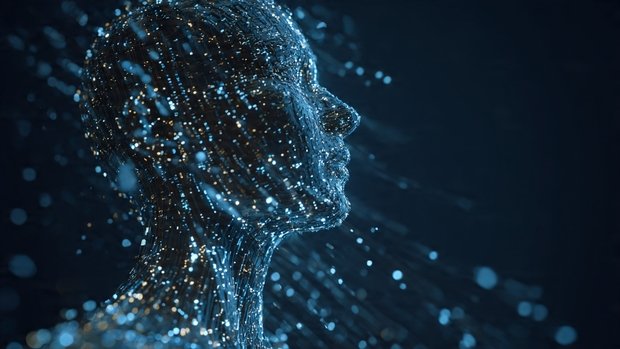
The integration of artificial intelligence and blockchain continues evolving rapidly, with several emerging trends poised to shape the future landscape of this technological convergence.
Agentic AI and Autonomous Systems
Agentic AI is among the top strategic technology trends for 2025, representing AI systems that operate autonomously, making decisions and taking actions to achieve specified goals without constant human supervision. When combined with blockchain’s trustless execution and transparent governance, agentic AI can power sophisticated autonomous systems managing complex operations, from self-governing supply chains to autonomous vehicles coordinating through decentralized networks.
These AI agents will interact through smart contracts, negotiate terms, transfer value, and execute agreements automatically while maintaining complete transparency and auditability. The convergence enables new business models where intelligent agents represent individual or organizational interests in decentralized marketplaces, performing tasks ranging from routine transactions to complex negotiations.
AI-Optimized Blockchain Architectures
Next-generation blockchain platforms are being designed specifically to support AI workloads, with architectures optimized for machine learning computation, large dataset storage, and efficient model sharing. These specialized chains incorporate consensus mechanisms that reward computational contributions to AI training, storage solutions for model parameters and training data, and execution environments capable of running sophisticated algorithms on-chain or in verified off-chain environments.
Integration with Quantum Computing and Post-Quantum Cryptography
Post-quantum cryptography is among the top technologies being developed to protect blockchain networks from future quantum computing threats. As quantum computers advance, they could potentially break current cryptographic foundations of blockchain security. Simultaneously, quantum computing promises to dramatically accelerate AI model training and inference.
The convergence of quantum computing, AI, and blockchain will require new cryptographic approaches while enabling previously impossible computational capabilities, potentially solving optimization problems, training massive AI models in a fraction of the current time, and processing blockchain transactions at unprecedented scales.
Decentralized AI Marketplaces and Model Sharing
Emerging platforms enable buying, selling, and sharing AI models, training data, and computational resources through blockchain-based marketplaces. Smart contracts automatically handle licensing, usage tracking, and compensation, while blockchain ensures models haven’t been tampered with and provides provenance information about training data and development processes.
These marketplaces democratize access to AI capabilities, enabling smaller organizations to monetize proprietary models or datasets they’ve developed, access specialized models for specific applications without building from scratch, and collaborate on model development with automatic credit attribution and revenue sharing through blockchain-enforced agreements.
Enhanced Regulatory Technology (RegTech) Solutions
As regulations around both AI and blockchain mature, integrated solutions will emerge to automate compliance monitoring and reporting. AI algorithms will analyze blockchain transactions for regulatory compliance in real-time, automatically generating required reports, detecting potential violations before they occur, and adapting to evolving regulations through continuous learning. These RegTech solutions reduce compliance costs while improving accuracy and responsiveness, helping organizations navigate complex, multi-jurisdictional regulatory landscapes governing both technologies.
More Read: From Crypto to Cognition: AI and Blockchain in Action
Conclusion
The convergence of AI and blockchain technology represents a transformative force reshaping digital ecosystems across industries, combining artificial intelligence’s analytical power with blockchain’s trustless infrastructure to create intelligent, transparent, and secure systems previously impossible to achieve. This integration delivers substantial benefits, including enhanced data security through cryptographic protection and intelligent threat detection, improved transparency and accountability addressing AI’s black-box problem, significant operational efficiency gains through intelligent automation, democratized access to sophisticated AI capabilities, and strengthened trust in digital interactions through verifiable, immutable records.
Despite challenges around scalability limitations, privacy complexities, integration difficulties, energy consumption concerns, and governance considerations, ongoing technological advances and maturing best practices are progressively addressing these obstacles. With the blockchain AI market projected to reach $1.88 billion by 2029 and real-world implementations demonstrating tangible value across supply chains, financial services, healthcare, decentralized organizations, and identity management, the practical potential of this technological fusion is undeniable.
As we look toward the future with emerging trends like agentic AI systems, quantum computing integration, specialized blockchain architectures, decentralized AI marketplaces, and advanced regulatory technology solutions, the synergy between artificial intelligence and blockchain will only deepen, creating opportunities for innovation, efficiency, and trust that redefine how organizations operate and how individuals interact in increasingly digital worlds. Organizations that understand this convergence invest strategically in developing relevant capabilities, navigate implementation challenges thoughtfully, and embrace the transformative potential of these combined technologies position themselves to thrive in the intelligent, decentralized future taking shape around us.

